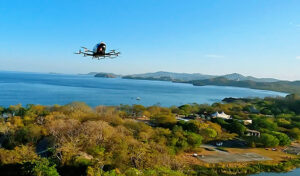Canairy app reveals outdoor workers more exposed to toxic air
The first data released from an app produced by the British Safety Council and developed by King’s College London has revealed that outdoor workers are up to 15% more exposed to air pollution than average Londoners.
Over six months the Canairy app has gathered data from a sample of London workers, some mostly working in offices and others mostly working outside.
Although both groups were exposed to high levels of air pollution, those working outside are exposed to air pollution averages higher than guidelines for NO2, particulate matter (PM2.5 and PM10) and ozone.
Some maximum exposures were nearly two thirds higher than recommended WHO guidelines.
Outdoor workers fared worst for exposure to particulate matter. The average of all the hourly recordings in the study was 13.8 ug/m3, nearly 40% above the WHO annual guideline.
Crucially, participants in the trial were also exposed to levels above an ‘average Londoner,’ based on WHO Air Quality report for 2018. For example, the average
exposure of workers using Canairy to PM2.5 is assessed at nearly 15% above the annual mean for Londoners.
Some results from the app are below. ‘Testers’ refers to indoor workers and ‘Employees’ refers to outdoor workers.
The British Safety Council launched a Time to Breathe campaign in March 2019 which aims to give workers and employers information about air pollution exposure as well as providing free advice and guidance.
The British Safety Council has called on the government to adopt WHO guidelines in the new Environment Bill.
Speaking today at the British Safety Council’s offices in London, head of campaigns Matthew Holder said: ‘The first data release confirms that outdoor workers are being exposed to high levels of air pollution with all the health risks that carries. Canairy confirms what we also thought — if you work outside in a city or near a busy road you are putting your health at risk.
‘What is new is that we now have the technology for individual workers to record their exposure. With Canairy and other forms of measurement we are building the evidence base that makes the case for change.
‘As a first step we must urgently adopt the WHO guidelines on PM2.5. But we also need investment in measurement so we can understand who is at risk and how people can limit their exposure to harmful air pollution.’













